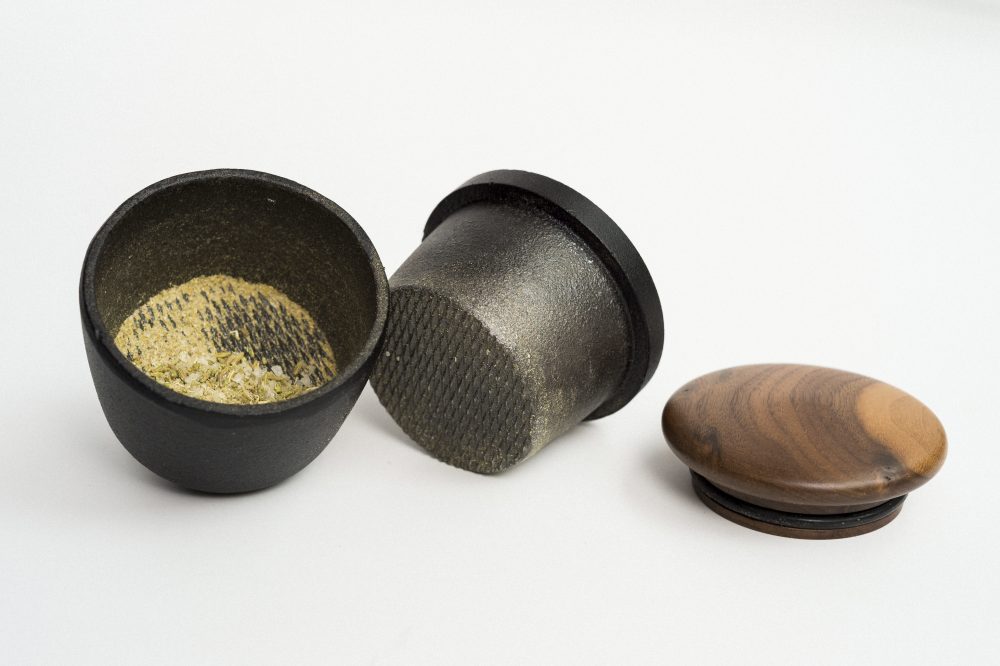
Warm Baguettes, 24/7
When a craving for fresh bread strikes at 3 a.m., Parisians can drop €1 in one of the city’s 50 bread-vending machines and, seconds later, bite into a warm baguette. The ATM-like machines, which debuted in 2011, consist of a refrigerator that stores prebaked bread, an oven that finishes cooking them and a heated compartment that holds freshly baked loaves for up to two hours. Nearby bakeries stock the machines, which are also found in the U.K., Russia and China. Two were installed last year in San Francisco, selling baguettes for $4.25 apiece; a friend of Milk Street described the bread there as crispy, with a nice crumb, if a bit run-of-the-mill.
From the Front Lawn to the Cutting Board
Thrift and function come together beautifully in the South African knives Jerald Blaber makes by hand from recycled carbon steel. Our favorite is an 8-inch santoku-style cleaver forged from an old commercial lawn mower blade (950 Rand, or about $70). The knives have serious heft yet sit comfortably in the hand. Blaber also makes cheese, carving, pocket and hunting knives, all of which he sells at farmers markets around Cape Town. See the full selection at knifedealer.co.za.


Foreign Food Zines
Food zines are flourishing, offering fascinating, creative glimpses into curious niches of the culinary world. But many have small print runs, making them hard to find. The hunt is half the fun. We recently found dozens at Athenaeum Nieuwscentrum, a bookshop in Amsterdam. Two favorites: Hot Rum Cow, a Scottish publication dedicated to all things alcohol (recent articles cover Canadian ice cider, a history of booze poisonings and a comparison of U.S. and U.K. drinking cultures); and The Carton, a Lebanese zine about the food and culture of the Middle East (the current, beautifully illustrated issue is about tahini).
Grinding with Iron
For a pepper grinder with both efficiency and flair, we like the cast-iron spice mills from Skeppshult, a century-old Swedish company that casts all of its products by hand. The three-piece grinder stores whole spices in a wood-capped compartment that fits into a cast-iron cup. Coarse teeth on the inside of the container and the cup can grind even a few peppercorns or cumin seeds to a fine powder— a challenge with a mortar and pestle or even an electric spice grinder. Available online at Canoe for $58.

Make Better Use of Your Bar
In pursuit of ways to use a bottle of walnut liqueur, we came across KindredCocktails.com, a trove of crowd-sourced cocktail recipes that allows you to search its database by ingredients. The site has enabled—and inspired— us to go far beyond Manhattans, martinis and sours with our home bar collection. You can also filter results by primary alcohol and average rating, making it cinch to find the best way to combine, say, rye, Chartreuse and bitters. One of our favorites is the In Bloom, a mix of mezcal, sweet vermouth, Campari and St-Germain liqueur, with a rose water rinse.

Grilled Cheese, Dutch-Style
Leave it to the Gouda-loving Dutch to find a fresh— and easy—way to melt cheese. The Cheese Barbeclette, made by Boska Holland, is a shallow nonstick pan with a folding handle. It’s designed to hold cheese (solo or with meat or vegetables) while set on a grill. We dreamed up lots of uses but love how easily it melts cheese to slide onto a burger— eliminating the risk of overcooking the meat (or of the cheese dripping off into the flames) while the cheese melts. Available as a two-pack on Amazon for $20.
Quick-Cooking Brown Rice
Brown rice takes almost an hour to cook and even then can develop a gummy, dense texture. But a type of genmai, short-grain brown rice from Japan, cooks in about the same time as white rice. milling: A portion of the outer bran layer is scrubbed away. The rice has a nutty, earthy flavor and its grains stay distinct and chewy when cooked. We love it paired with curries and stir-fries, and it lends an extra dimension to fried rice. Wismettac Asian Foods distributes Sukoyaka genmai in 4- and 15-pound bags. Look for it in Asian grocery stores, Target or from online retailers.


A Sour, Sweet Molasses from the Middle East
Middle Eastern home cooks frequently use pucker-inducing pomegranate molasses to balance savory dishes, as well as relishes, marinades, even lemonade. We use the dark, syrupy liquid to add tang to our fattoush (a Levantine bread salad, page 18). We also like it drizzled over grilled chicken or fish, green beans, even vanilla ice cream. It’s made by boiling down the juice of sour (and sometimes sweet) pomegranates until thick. Some brands add sugar, lemon juice or citric acid to enhance the flavor and extend shelf life. We prefer Al Wadi’s 100% Natural Pomegranate Molasses, which is made from nothing but pomegranate juice; it has a balanced tart-sweet taste, while other brands can taste saccharine, artificially sharp and even burnt. Available on Amazon for $12. Stored in a cool, dark place, it keeps for a year or more.
I made the chickpea and yogurt soup with parsley and dill from the May-June 2017 issue tonight and it was delicious. Thank you! However, the yogurt curdled the minute it went into the soup. Yes, it was off the heat. The taste was still great, but it didn’t look pretty. I used Fage whole-milk Greek-style yogurt and followed all your instructions. Can you assist? — Jonna Lee Hough, Seattle, Washington
While we often dollop plain Greek yogurt on top of soups and stews for added tang, we avoid it when we plan to mix the yogurt into broth for a smooth, creamy texture. For that, we use regular yogurt. It’s a matter of protein. Both varieties of yogurt contain casein protein. At room temperature, the casein forms stable droplets of protein, or micelles. But heat can break those droplets apart, allowing the proteins to interact, link together and curdle. Because Greek-style yogurt is made by straining out additional liquid, the casein protein is concentrated, roughly double that of regular yogurt. That means that when exposed to heat, there are twice as many potential interactions, or twice as many opportunities for the proteins to coagulate. That reaction is what caused the yogurt to curdle. When we added Greek-style yogurt to hot soup, we got the same results. Switch to regular yogurt and the soup should be great. Too late for that? To cover up the curdles, puree a portion of the soup, then stir it back in.



